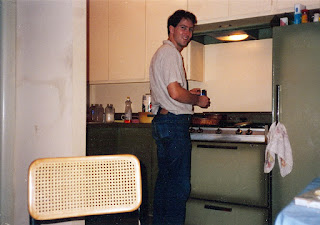From Valley National Bank to Bank One to Chase Bank

When I got the job, in 1990, as a young Graphic Designer at Valley National Bank, in the corporate offices in Phoenix, I was delighted. Unfortunately, it wasn't long until I learned that I was on a sinking ship. Even though Valley National Bank was celebrating 90 years in Arizona in 1990, everybody I talked to told me that the Bank was in terrible condition financially. At the time that I started, Valley Bank had not paid dividends to its stockholders for years. They were “frozen”. And the more I learned about how much Valley Bank had invested in Arizona, the more I understood someone who said, “If Valley National Bank goes bankrupt, we all have to leave Arizona, and the last one turns out the light”. But, in 1992 Valley National Bank was taken over by a very strong Bank that was headquartered in Columbus, Ohio, named Bank One. Bank One had been buying up banks all over the country, and then leaving them alone to run themselves. If you lived in the Valley at the time, you ma...


























